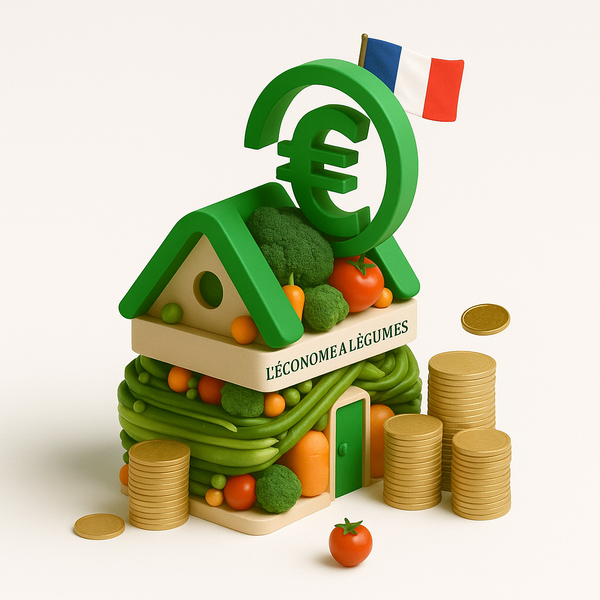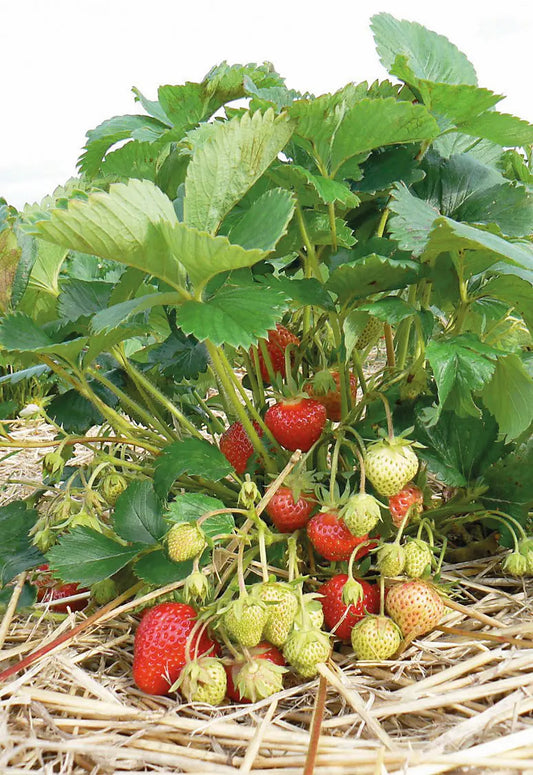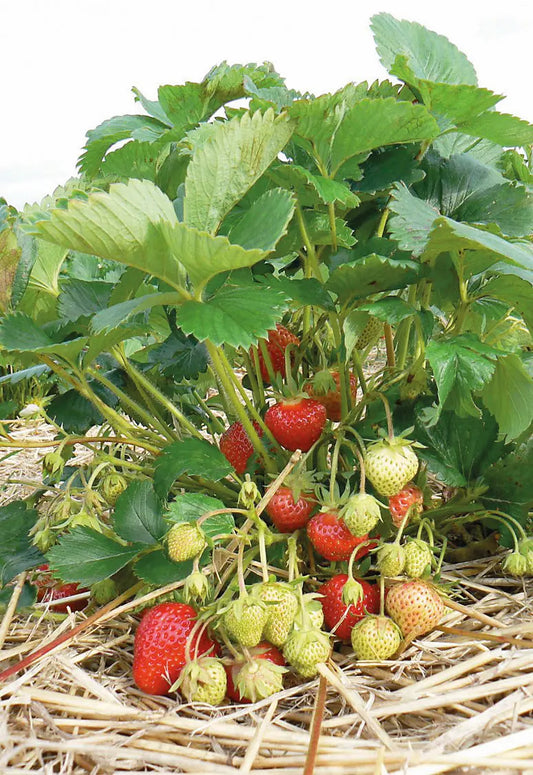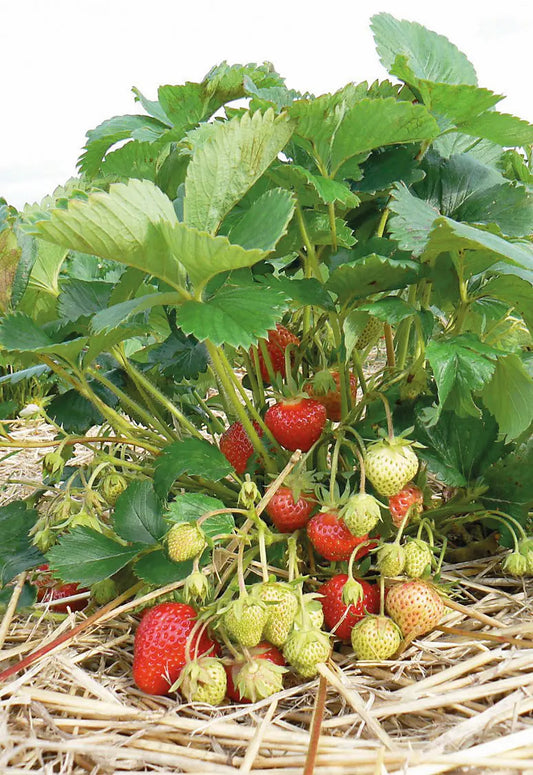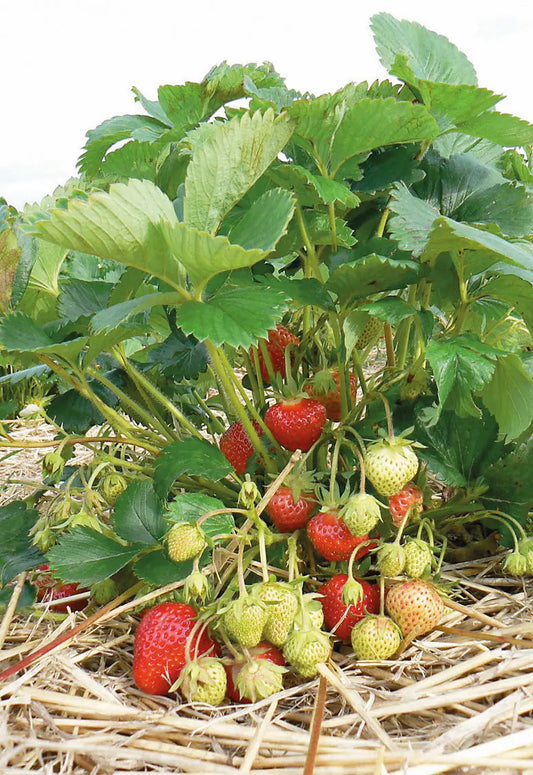-
Delivery from 10 plants to France, Switzerland and Europe
Delivery method -
Strawberry Plant Wholesale Supplier
About Us -
Quality Strawberry Plants
Strawberry technical itinerary -
Secure payment
Our Payment Terms
Renaissance Frigo A++ Strawberry Plant
Renaissance Frigo A++ Strawberry Plant
Price per unit (€ excluding VAT) excluding shipping. Our prices are based on volume. We offer you the best option based on your needs.
 - Add the desired date to your quote request
- Add the desired date to your quote request
- Buy now and get it delivered when you're ready to plant
- Delivery from 10 plants to France, Switzerland and Europe
Couldn't load pickup availability
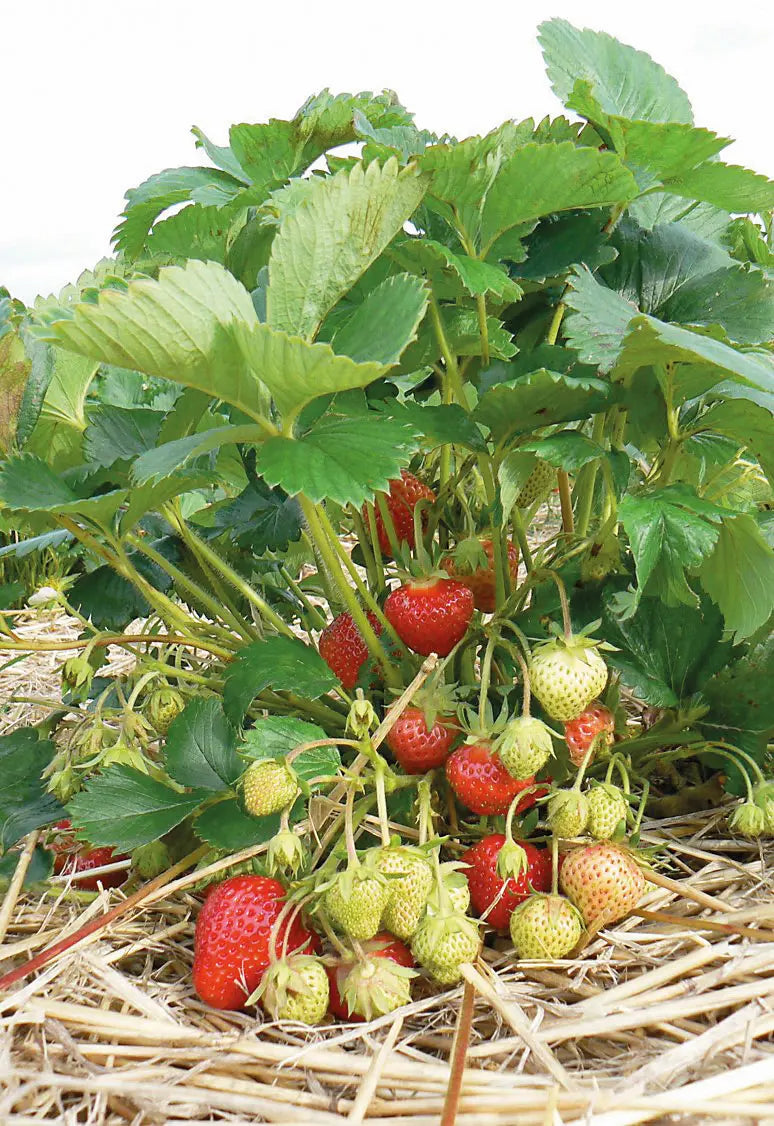
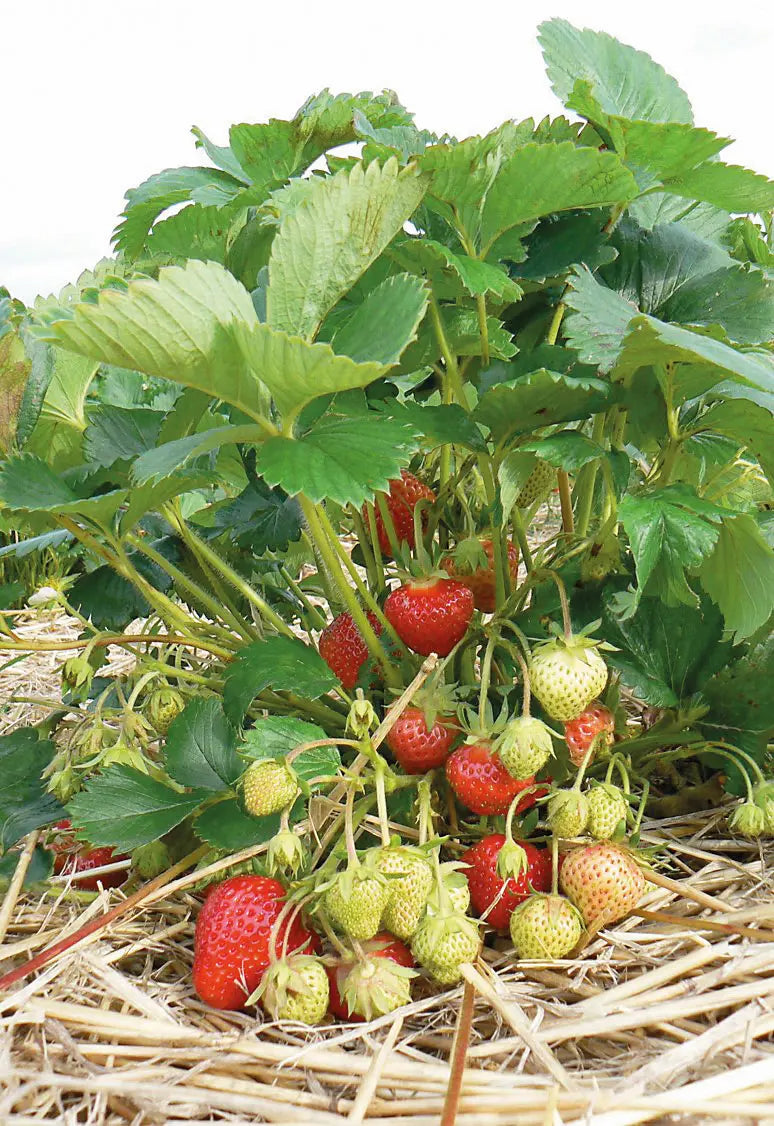
Collapsible content
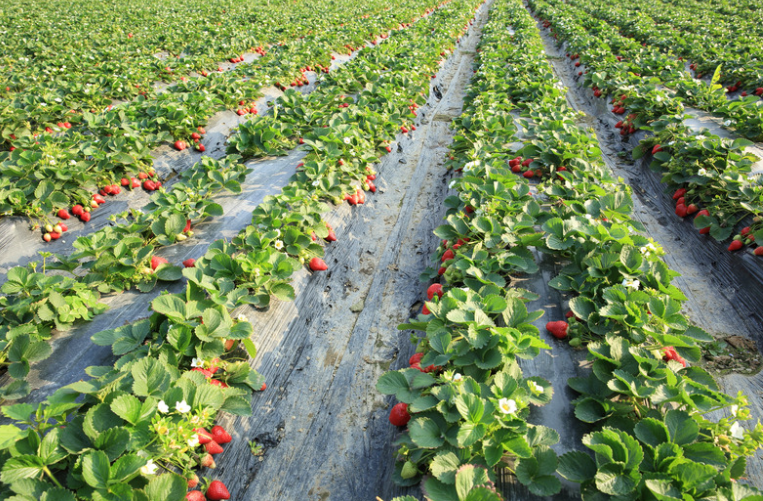
Strawberry Plant Buying Guide: What Type of Plants? For What Market Opportunity?
Which format should you choose: refrigerated, fresh, tray-plants, waiting bed, or plugs? Compare yields, costs, and harvest times at a glance.
Download the PDF guide (13 pages)
Why read this guide?
- Comparison tables: yield (300–600 g/plant), cost & labor.
- Reservation/delivery calendar for each format.
- Minimum order: 20 to 1,000 plants depending on the type.
- Full-field vs. above-ground case studies to maximize margin.
Overview of the 5 professional formats
Detailed comparison of formats
| Format | Yield (g/plant) |
Harvest time | Min. order | Average cost |
|---|---|---|---|---|
| Fridge | 250 – 400 | 120 days | 20 plants | 0.20 – 0.45 € |
| Costs | 280 – 420 | 140 days | 200 plants | 0.20 – 0.45 € |
| Tray plant | 400 – 600 | 90 days | 500 plants | 0.75 – 0.80 € |
| Waiting Bed | 300 – 500 | 105 days | 500 plants | 0.50 – 0.60 € |
| Motte | 230 – 350 | N+1 | 1,000 plants | 0.35 – 0.50 € |
Delivery schedule
| Plant type | Jan | Feb | Mar | Apr | May | Jul | Jul | Aug | Sep | Oct | Nov | Dec |
|---|---|---|---|---|---|---|---|---|---|---|---|---|
| Fridge | ||||||||||||
| Tray plants | ||||||||||||
| Waiting Bed | ||||||||||||
| Motte | ||||||||||||
| Costs |
Which format for which scenario?
Full field controlled budget
Fridge or Fresh : cost 2 x lower than tray plants, planting flexibility.
Above ground in greenhouse
Tray-plants : harvest 90 days after planting, uniform size, reduced labor.
Late planting
Mottes : planting July–August, rapid recovery, harvest the following year.
Ready to plan your plantings?
Download the complete guide Request a quoteFrequently Asked Questions
Is the guide free?
Yes, no fees or obligation to purchase.
How to download it?
Click the button “Download the guide” ; the PDF opens immediately.
Can I request a personalized quote?
Of course: write to us at contact@fraisiverse.com and an agronomist will respond to you within 24 hours.
Choosing the right strawberry varieties for your plot
Extend your harvest season by up to 5.5 months with our "early + season + everbearing" method. Compare 78 cultivars, sizes, and markets.
Download the PDF guide (17 pages)
4 axes to decide quickly
- Harvest Window : Early, Seasonal, or Everbearing? Combine them for 5.5 months .
- Commercial outlet : direct sales, long circuit, processing or freezing.
- Type of plants : fridge, fresh, root ball, tray plants… adapt your investments and your schedule.
- Growing conditions : open field, soilless, greenhouse; target consistent yield and size.
Axis 1: Select your harvest window
Example of recommended mix:
- Ciflorette (early) → Rubis des Jardins (season) → Charlotte (remontant).
- 5.5 months of continuous production, ideal for direct sales.
Axis 2: Sell at the right market
Direct sales
Ciflorette, Charlotte, Mara des Bois: premium taste sought after by consumers.
Long circuit / GMS
Magnum, Clery, Dream: uniform size, 95% class 1 fruit.
Transformation
Darselect, Mara des Bois – high sugar content and stable aroma.
Freezing
Honeoye, Belrubi – firm flesh, keeps well in the cold.
Axis 3: Choose the right type of plants
| Kind | Reservation | Delivery | Highlights |
|---|---|---|---|
| Fridge | All year round | Dec. → Aug. | Flexibility & price |
| Tray plants | Feb. → June | Nov. → Apr. | Above ground, harvest 90 days after planting |
| Motte | Sep. → May | Jul. → Sep. | Ideal for open fields, harvest N+1 |
| Costs | Feb. → Aug. | Sep. → Nov. | Young plants, rapid recovery |
Axis 4: Optimize your technical constraints
Tray plants guarantee +25% yield and simplified harvesting above ground; ideal for mechanizing your production and ensuring consistent size.
Frequently Asked Questions
Is the guide really free?
Yes, with no cost or obligation to purchase.
How to download it?
Just click the button “Download the guide” at the top of the page; the PDF opens immediately.
Can I request a personalized quote?
Of course: contact us via our contact page .
When to plant? When to harvest?
Do you want to start a strawberry farm but don't know when to reserve your plants, when to plant them or even harvest them?
Because we love 🍓 (with just a little sugar), we're going to do the work for you. On this page, you'll find the growing steps for each type of strawberry plant. When to order? What is the delivery period? When to plant? And finally, when to harvest?
Production Calendar - Frigo Strawberry Plants
| Production Calendar - Frigo Strawberry Plants | ||||||||||||||||||||||||
|---|---|---|---|---|---|---|---|---|---|---|---|---|---|---|---|---|---|---|---|---|---|---|---|---|
| Jan | Feb | Mar | Apr | May | Jun | Jul | Aug | Sep | Oct | Nov | Dec | |||||||||||||
| Reservation | ||||||||||||||||||||||||
| Deliverable | ||||||||||||||||||||||||
| Recommended planting | ||||||||||||||||||||||||
| Harvest | ||||||||||||||||||||||||
Production Calendar - Fresh Bare-Root Strawberry Plants
| Production Calendar - Bare Root Strawberry Plants | ||||||||||||||||||||||||
|---|---|---|---|---|---|---|---|---|---|---|---|---|---|---|---|---|---|---|---|---|---|---|---|---|
| Jan | Feb | Mar | Apr | May | Jun | Jul | Aug | Sep | Oct | Nov | Dec | |||||||||||||
| Reservation | ||||||||||||||||||||||||
| Deliverable | ||||||||||||||||||||||||
| Recommended planting | ||||||||||||||||||||||||
| Harvest | ||||||||||||||||||||||||
Production Calendar - Strawberry Plants Plugs
| Production Calendar - Strawberry Plants Motte | ||||||||||||||||||||||||
|---|---|---|---|---|---|---|---|---|---|---|---|---|---|---|---|---|---|---|---|---|---|---|---|---|
| Jan | Feb | Mar | Apr | May | Jun | Jul | Aug | Sep | Oct | Nov | Dec | |||||||||||||
| Reservation | ||||||||||||||||||||||||
| Deliverable | ||||||||||||||||||||||||
| Recommended planting | ||||||||||||||||||||||||
| Harvest | ||||||||||||||||||||||||
Production Calendar - Strawberry Plant Tray
| Production Calendar - Strawberry Plants Motte | ||||||||||||||||||||||||
|---|---|---|---|---|---|---|---|---|---|---|---|---|---|---|---|---|---|---|---|---|---|---|---|---|
| Jan | Feb | Mar | Apr | May | Jun | Jul | Aug | Sep | Oct | Nov | Dec | |||||||||||||
| Reservation | ||||||||||||||||||||||||
| Deliverable | ||||||||||||||||||||||||
| Recommended planting | ||||||||||||||||||||||||
| Harvest | ||||||||||||||||||||||||
Our Growing Guides by Plant Type / Our Growing Tips
Our online advisor: Fraisibot
Our technical itineraries by type of strawberry plant:
Technical Itinerary for Growing Strawberries from Frigo Plants
Technical Itinerary for Growing Strawberries from Plug/Pod Plants
Technical Instructions for Growing Strawberries from Tray or Mini Tray Plants
Technical Guide for Growing Strawberries from Bare-Root Fresh Strawberry Plants
Technical Instructions for Growing Strawberries from Waiting Bed Plants
All our growing tips for planting strawberries:
Strawberry Plants: Soil Preparation and Planting
Soil preparation for strawberry growing, planting techniques, and optimizing strawberry yield.
Best Practices for Irrigation and Fertilization of Strawberry Plants
Efficient irrigation systems, frequency and quantity of watering, types of fertilizers and application times, signs of nutritional deficiencies, growing strawberries in substrate, protection against frost and diseases.
Protection and Prevention of Strawberry Diseases and Pests
The main diseases and pests affecting strawberries, as well as effective methods for their prevention and treatment, including biological control and the use of resistant varieties. It provides practical advice for maintaining healthy and productive strawberry crops.
Succeeding in Strawberry Farming: Costs, Business Strategy and Subsidies
Growing strawberries requires significant initial and ongoing costs, but with effective marketing strategies and sustainable practices, growers can maximize their profits while contributing positively to the environment. Grants and financial aid are available to support necessary investments and encourage environmentally friendly farming practices.
Maximizing Strawberry Harvest and Storage: A Practical Guide
How to determine the optimal time to harvest strawberries, best practices for minimizing fruit damage during picking, and effective methods for storing and managing unsold strawberries to avoid losses and maximize profitability. It offers practical tips for extending the shelf life of strawberries, including refrigeration, freezing, and dehydration.
Strawberry Growing: Why Stagger Production? Early, Seasonal, Late? How to Choose?
Staggering strawberry production allows for harvests to be spread throughout the season, ensuring optimal fruit quality and increased profitability. Learn about recommended varieties for early, mid-season, and late-season production, as well as best practices for harvesting and storage.
Renaissance strawberry variety technical sheet
- Remontant: Non-Remontant
- Precocity: Mid-Season
- Harvest period: Early June to Early July
- Fruit shape, texture, appearance: Shiny, heart-shaped
- Fruit Color: Extremely Bright
- Taste characteristics: Old variety of wild strawberries, excellent, very aromatic taste, very good acid-sweet ratio
- Fruit Size: Old variety of wild strawberries, excellent taste, very aromatic, very good acid-sugar ratio
- Disease resistance: Good vigor and disease resistance
- Yield, management and marketing: Perfect for open fields, good yield
- Recommended commercial use / marketing channel: Direct sales, Wholesale, Processing
Order your professional strawberry plants
Fraisiverse, a specialist wholesale supplier of strawberry plants , offers you the Renaissance variety, appreciated for its robustness, productivity and authentic taste. Buying your strawberry plants guarantees you a consistent and quality production, from specialized nurseries and adapted to professional crops. Our plants offer many advantages: producer prices , professional quality , high yield , disease tolerance , fast and careful delivery throughout France , as well as personalized advice to optimize your plantations. Thanks to its natural resistance, the Renaissance variety adapts equally well to organic farming as to high-end short supply chains. Order now and reserve your plants now to take advantage of the peak season and guarantee an abundant and tasty harvest. Take advantage of our producer prices and request a free quote for your volume needs. Offer your customers a premium strawberry that will make the difference on your stalls.
Varietal characteristics and fruit morphology
The Renaissance Strawberry is a non-remontant variety, which means that it concentrates all of its fruit production in a single period per year, characteristic of short-day fruiting varieties. Coming from old selections and traditional crosses, it inherits appreciable robustness and vigor, constituting a reliable choice for open-field cultivation.
The fruits of the Fraisier Renaissance, although small to medium-sized , with an average size of around 18 to 20 grams per fruit , are remarkably uniform. Their cordiform, or heart-shaped, shape, combined with an extremely bright red color, gives them a distinctive visual appeal that catches the eye on the shelves. The skin is smooth and exceptionally shiny, which guarantees an impeccable presentation in a tray, emphasizing the freshness and appetizing taste of the product. The flesh, firm and full, tends towards a light to deep red, uniform, without a marked white center, an intrinsic quality often sought after for tasting as well as for possible processing.
Taste profile and organoleptic quality
However, it is in terms of taste that the Renaissance truly excels. It offers an intense flavor and an aroma reminiscent of old-growth wild strawberries , a profile highly prized by connoisseurs. The sugar/acidity balance is perfectly mastered, providing a taste experience that is at once fresh, lively and complex, standing out from the more uniformly sweet varieties on the market. Although the precise Brix degree is not always communicated in a standardized way, its aromatic profile suggests a typical value for local strawberries, estimated between 7.5 and 9.5 °Brix , positioning it favorably compared to references such as Gariguette (7-8 °Brix) or Mara des Bois (8-10 °Brix).
Cultivation and technical management of plantations
To fully exploit the potential of the Renaissance Strawberry, a rigorous cultural itinerary is recommended, taking into account its productive lifespan and its pedoclimatic requirements. The optimal lifespan of a Renaissance plantation is generally between three and four years . Beyond this period, it is imperative to renew the plants, because a significant decline in fruit quality (size, taste) and plant vigor is observed, accompanied by an increased sensitivity to root diseases and parasites. Planning this three- or four-year renewal is therefore a key strategy for maintaining profitable and healthy production.
Soil requirements and substrate preparation
Regarding the soil, Renaissance thrives in a loamy or clayey-loamy environment, characterized by good drainage while retaining moisture and essential nutrients. A loose, well-aerated soil is crucial; in the presence of heavier soils or those at risk of waterlogging, cultivation on raised beds or mounds is highly recommended. The optimal pH is between 5.8 and 6.2 , although the variety can tolerate values up to 6.5 or even 7, beyond which nutrient assimilation could be compromised. Enriching the substrate with organic matter is fundamental: incorporating mature compost or well-rotted manure (between 8 and 20 liters per square meter) before planting significantly improves soil fertility and structure. Strawberries, and Renaissance is no exception, do not tolerate saline soils well; a maximum electrical conductivity of 1.0 to 1.2 dS/m is recommended for the soil.
Fertilization and mineral nutrition program
The fertilization plan must be adapted to support productivity and fruit quality. The indicative inputs of major elements per hectare per year are 80 to 120 kg of Nitrogen (N), 60 to 100 kg of Phosphorus (P₂O₅) and 150 to 180 kg of Potash (K₂O) , the latter being crucial for the taste quality and firmness of the fruit. Splitting the inputs is essential: 50% of the nitrogen, 100% of the phosphorus and 60-70% of the potash will be incorporated into the base before planting. The nitrogen supplement (40-50%) will be applied at the start of the vegetative cycle in spring, and the remaining potash at fruit set to promote fruit size. A limited post-harvest input of potash can also prepare for future fruiting. Monitoring of trace elements such as Magnesium (30-40 kg/ha of MgO if deficient), Iron, Manganese, Boron (1-2 kg/ha if deficient), Zinc and Molybdenum is also recommended, adjusted according to foliar and soil analyses.
Runner management and crop rotation
Managing runners, by cutting them in the first year, allows the plant's energy to be redirected towards fruiting, thus optimizing production. Crop rotation on plots is an essential prophylactic practice to reduce the pressure of soil-borne diseases.
Productive performance and harvest schedule
The Renaissance Strawberry, although producing small to medium-sized fruits, is known for its good yield potential. Under optimal growing conditions and with professional management, an average yield per plant can be estimated at around 400 to 600 grams per year . At a typical planting density of 40,000 to 50,000 plants per hectare in the open field, this translates into a potential yield of 16 to 30 tonnes per hectare . Although these figures are lower than those of some very large-fruited varieties, they remain competitive for specialty markets and high-end processing. The variety concentrates its energy on a single wave of production, thus offering massive volumes over a tight period.
Marketing window and harvest planning
Renaissance is a mid-season variety , with a main harvest window generally extending from early June to early July in most French regions. Approximately 70% of production is concentrated in a three- to four-week period, typically from mid-June to the first week of July (weeks 24 to 27) . This concentration allows for efficient planning of labor and marketing operations, ideal for wholesale or processing plants. The main flowering period takes place from late May to early June, shortly before the intense harvest period.
Health resistance and phytosanitary strategies
One of the major assets of the Renaissance Strawberry is its robust health . It is considered highly disease-resistant , making it a prime candidate for organic farming and sustainable cultivation practices. Its intrinsic vigor and hardiness help limit pest pressure, thus allowing for a reduction in treatments.
Although available sources do not provide precise figures for resistance to specific diseases (such as botrytis, powdery mildew, anthracnose, phytophthora, or verticillium wilt) compared to controls, the repeated mention of "very good resistance" and "adaptation to organic farming" suggests general tolerance and appreciable ease of phytosanitary management for professionals. Nevertheless, as with any crop, regular monitoring and prophylactic practices remain essential to prevent the appearance and spread of any disease.
Commercial valuation and economic analysis
The profitability of the Renaissance Strawberry is driven by its positioning in the fresh consumption market, particularly direct sales and short supply chains . Its visual appeal (heart shape, shine) and intense flavor make it a premium product, sought after by customers concerned about quality and taste. The Renaissance's post-harvest conservation is above average, which allows for short transport without significant alteration of freshness or organoleptic qualities, an undeniable logistical advantage for short supply chains.
Commercial quality and waste rate
Regarding marketing, the variety ensures a high proportion of quality fruit. It is estimated that around 75 to 85% of the fruit harvested is first category (class I) , a high rate for a small fruit. The waste rate (malformed, damaged or non-compliant fruit) is between 10 and 15% . The homogeneity of size at peak production is also very good, facilitating packaging and commercial development.
Industrial outlets and processing
Renaissance is not particularly recommended for heavy industrial processing (jam, mass freezing) due to its small size and its positioning on the "premium" fresh market. Manufacturers often favor varieties with larger fruits or whose yield is optimized specifically for their processes. However, its intense flavor and balanced taste make it suitable for artisanal processing, particularly into jams or pastries.
Professional feedback
Grower feedback highlights the Fraisier Renaissance as a strategic choice for those targeting a niche market that values authentic taste and quality. Its flavor profile, reminiscent of wild strawberries, is a powerful selling point, distinguishing it from more standardized modern varieties. Growers also appreciate the balance between fruit quantity, plant hardiness, and aromatic intensity, making it a variety chosen for its authenticity and the typicality of the final product, rather than for mass production. Its vigor and general disease resistance are key success factors for sustainable and profitable outdoor cultivation.
To summarize: Our Renaissance Strawberry plants
At Fraisiverse , we offer you a rigorous selection of Renaissance Strawberry plants, designed to meet the requirements of professional growers. As a specialist wholesale supplier of Strawberry plants , we guarantee vigorous, disease-resistant plants that are perfectly suited to outdoor cultivation. The Renaissance Strawberry, a short-day, non-remontant variety, is distinguished by its heart-shaped, bright red fruits, with an average size of 18 to 20 g, offering an intense flavor reminiscent of wild strawberries. Choosing this variety means opting for an average yield of 16 to 30 t/ha, concentrated over a mid-season harvest window of three to four weeks. Thanks to our advantageous conditions, you can buy Renaissance Strawberry plants while benefiting from decreasing prices, fast and careful delivery and dedicated technical support. Our expertise as a specialist wholesale supplier of strawberry plants allows us to assist you in choosing the right soil, fertilizing and managing runners to maximize your profitability. The Renaissance appeals to premium markets, thanks to its robust health and unique taste qualities. This is why many producers trust us to buy Renaissance strawberry plants and thus promote their production in short supply chains or direct sales. As a specialist wholesale supplier of strawberry plants , we make every effort to ensure our customers receive high-performance plants, adapted to regional climatic constraints and optimized for exceptional commercial quality. With Fraisiverse , buying Renaissance strawberry plants means investing in a product with high added value and incomparable visual appeal.
-
Renaissance Frigo A- Strawberry Plant
Regular price €0,17 EURRegular priceUnit price / per -
Renaissance Frigo A Strawberry Plant
Regular price €0,18 EURRegular priceUnit price / per -
Renaissance Frigo A+ Strawberry Plant
Regular price €0,26 EURRegular priceUnit price / per -
Renaissance Frigo A++ Strawberry Plant
Regular price €0,32 EURRegular priceUnit price / per
